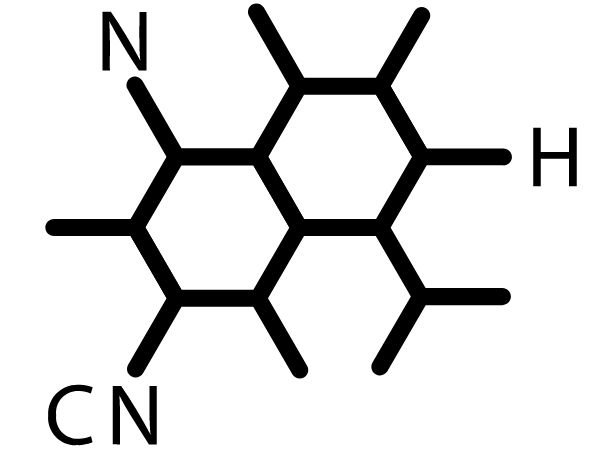The selection of the best microorganism media is critical for high product yield. The quality of media is critical because it provides nutrients and energy for microorganism growth.
Some important components of microorganism’s culture media
The nutrients required for fermentation media are also determined by the type of microorganisms and the type of biochemical process used. A poor selection of microorganism media may result in a low output yield. The types of nutrients present in the media always determine the product yield. The basic requirement of culture media includes but is not limited to the source of energy, water, carbon source, nitrogen source, vitamins, and minerals. Media for small-scale laboratory purposes are relatively easy to design, but media for industrial purposes are difficult to prepare. An enriched culture medium has had essential elements for microorganism growth added to it (Bonnet et al., 2020; Tankeshwar, 2022).
The nutrients
Microorganisms require only a few nutrients to grow i.e. water, a carbon source, a nitrogen source, mineral salts (Kumar, 2012), energy source, and growth factors.
Water: Water is essential for solubilizing nutrients, transporting them, and ensuring hydrolysis reactions. Some bacteria require free water to grow. If the agar evaporates during incubation, this water may be lost, resulting in a decrease in colony size and inhibition of bacterial growth (Kumar, 2012; Power and Johnson, 2009).

Carbon source: In bacteria, carbon is the most abundant constituent element. Bacteria require carbon molecules to produce fats, carbohydrates, proteins, and nucleic acids. Bacteria can use inorganic carbon sources, such as carbon dioxide, or organic sources such as sugars and alcohol (Kumar, 2012; Atlas, 2010).

Nitrogen source: Nitrogen sources are plentiful and can be found in a wide range of compounds used in the formulation of a culture medium. It is found in both organic and inorganic forms, corresponding to protein hydrolysates, particularly protease-peptone or tryptone, as well as nitrates. Nitrogen enables bacteria to synthesize proteins (Atlas, 2010; Latge, 1975).

Finally, phosphate, sulfate, magnesium, or calcium are frequently found among the common mineral salts (Power and Johnson, 2009).
Energy sources: Bacteria are classified into two types: phototrophic bacteria, which use light as an energy source by converting it into an electrochemical gradient of protons (Yurkov and Beatty, 1998), and chemotrophic bacteria, which use the energy of oxidation of mineral or organic compounds as an energy source (Thauer et al., 1977) Listeria monocytogenes is one of these bacteria (Van der Horst et al., 2007)
Growth factors
The use of a minimal medium prevents the growth of certain bacteria that require specific elements to survive. To increase bacterial multiplication, growth factors are sometimes added to culture media. Growth factors are elements that bacteria cannot synthesize from available nutrients in the environment (Kumar, 2012; Werkman and Wilson, 1957). Growth factors are required in small quantities in the culture medium, and their requirement is justified by the bacterium’s lack of or blockage of a metabolic pathway.
There are various types of growth factors, including purine and pyrimidine bases (Snell and Mitchell, 1941). Amino acids are also growth factors (Dunn ET AL., 1947) and are used in the synthesis of proteins. Vitamins are also included in growth factors. They are coenzymes or coenzyme precursors (Duncan et al., 2002). A vitamin is an organic substance that is required in small amounts for the metabolism of a living organism but cannot be synthesized in sufficient amounts by that organism. Blood and its derivatives are also employed (Collins and Lyne, 1970). Finally, by simulating their natural environment, rumen fluid can be used to promote the growth of certain bacterial species (Lagier et al., 2012 and 2015).
Principles of culture medium
Seed culture medium
The seed culture medium is used for cell growth and multiplication for the next fermentation. A properly formulated cell culture medium with nutrients, vitamins, and growth factors is very important for microorganism growth (Tankeshwar, 2022).

Nutrient media
- Undefined media: Undefined media that are also known as basal or complex media contain a carbon source such as glucose, water, various salts, a source of amino acids, and nitrogen (e.g., beef, yeast extract) for microorganism growth. This is an undefined medium because the amino acid source contains a variety of compounds whose exact composition is unknown. However, the nutrient media contain all of the elements that most bacteria require for their growth and are non-selective, so they are used for general cultivation and maintenance of bacteria kept in laboratory culture collections.
- Defined media: In such type of medium all the chemicals being used are known but such kinds of media don’t contain any plant or animal tissues and yeast.
- Differential or indicator media: A dye or indicator is added in such types of mediums, that are used to identify any specific chemical reaction occurring during bacterial growth. It allows the growth of multiple microorganisms; however, bacterial colonies are distinguished by their color when the indicator undergoes a chemical change, such as neutral red, phenol red, or methylene blue.
Minimal media
The composition of minimal media varies depending on the microorganism being cultured. This medium is typically composed of a carbon source such as sugar/succinate, various inorganic salts (salts of essential elements such as magnesium, nitrogen, phosphorous, and Sulphur), and water (Singh, 2022; Tankeshwar, 2022).
Selective media
Such kinds of media are used to grow only certain kinds of microorganisms. For example, a specific antibiotic or inhibiting agent or substance is added to allow only the growth of microorganisms that are resistant to that specific substance. The goal is to separate a specific type of microorganisms from a mixed microbial population using this medium. One is designed to meet the carbon and nitrogen needs of specific microorganisms, while the other is designed to meet the physical and chemical resistance of specific microorganisms (Singh, 2022; Tankeshwar, 2022).
Transport media
These are used to temporarily store specimens that are being transported to the laboratory for cultivation. Such media should ideally keep all organisms in the specimen alive without changing their concentration. Typically, transport media contain only buffers and salt. Microbial multiplication is hampered by a lack of carbon, nitrogen, and organic growth factors. Transport media used in anaerobic isolation must be free of molecular oxygen (Singh, 2022; Tankeshwar, 2022).
Enriched media
Enriched media contain the nutrients necessary for the growth of a wide range of organisms, including some of the most difficult to grow. They are commonly used to collect as many different types of microbes as the specimen contains. Blood agar is an enriched medium that contains nutritionally dense whole blood in addition to the basic nutrients. Chocolate agar is fortified with heat-treated blood (40-45°C), which turns brown and gives the medium its name (Singh, 2022; Tankeshwar, 2022).
Characteristics of ideal culture medium
The first important characteristic is it should be easily available at an affordable price and produce consistent products with a minimum batch variation. The medium should produce a higher yield of the desired product in a short time and a lower yield of undesirable products. It should be easy to sterilize. It should work well with the fermentation process and should be environment-friendly before, during, or after its use (Singh, 2022; Tankeshwar, 2022).
References
Atlas R.M. 3rd ed. CRC Press; Boca Raton, FL: 2010. Handbook of microbiological media.
Bonnet M, Lagier JC, Raoult D, Khelaifia S. Bacterial culture through selective and non-selective conditions: the evolution of culture media in clinical microbiology. New microbes and new infections. 2020 Mar 1;34: 100622.
Duncan S.H., Hold G.L., Harmsen H.J., Stewart C.S., Flint H.J. Growth requirements and fermentation products of Fusobacterium prausnitzii, and a proposal to reclassify it as Faecalibacterium prausnitzii gen. nov., comb. nov. Int J Syst Evol Microbiol. 2002; 52:2141–2146.
Dunn M.S., Shankman S., Camien M.N., Block H. The amino acid requirements of twenty-three lactic acid bacteria. J Biol Chem. 1947; 168:1–22.
Kumar S. JP Medical Ltd; New Delhi: 2012. Textbook of microbiology.
Lagier J.C., Armougom F., Million M., Hugon P., Pagnier I., Robert C. Microbial culturomics: paradigm shift in the human gut microbiome study. Clin Microbiol Infect. 2012; 18:1185–1193.
Lagier J.C., Hugon P., Khelaifia S., Fournier P.E., La Scola B., Raoult D. The rebirth of culture in microbiology through the example of culturomics to study human gut microbiota. Clin Microbiol Rev. 2015; 28:237–264.
Latge J.P. Croissance et sporulation de 6 espèces d’Entomophthorales II. Influence de diverses sources d’azote. Mycopathologia. 1975; 57:53–57.
Magdoub M.N., Hassan Z.M., Effat B.A., Sadek Z.I., Tawfik N.F., Mabrouk A.M. Probiotic properties of some lactic acid bacteria isolated from Egyptian dairy products. Int J Curr Microbiol Appl Sci. 2015; 4:758–766.
Power D.A., Johnson J.A. 2nd ed. Becton, Dickinson and Company; Sparks: 2009. Difco™ & BBL™ manual.
Singh A. Culture Media: Classification, Types, and Relevance. https://conductscience.com/culture-media/
Snell E.E., Mitchell H.K. Purine and pyrimidine as growth substances for lactic acid bacteria. Proc Natl Acad Sci USA. 1941; 27:1.
Tankeshwar A. 2022. Bacterial Culture Media: Classification, Types, Uses.https://microbeonline.com/author/tankeshwar/
Thauer R.K., Jungermann K., Decker K. Energy conservation in chemotrophic anaerobic bacteria. Bacteriol Rev. 1977; 41:100.
Van der Horst M.A., Key J., Hellingwerf K.J. Photosensing in chemotrophic, non-phototrophic bacteria: let there be light sensing too. Trends Microbiol. 2007; 15:554–562.
Werkman C.H., Wilson P.W. Academic Press Inc.; New-York: 1951. Bacterial physiology.
Yurkov V.V., Beatty J.T. Aerobic anoxygenic phototrophic bacteria. Microbiol Mol Biol Rev. 1998; 62:695–724.







